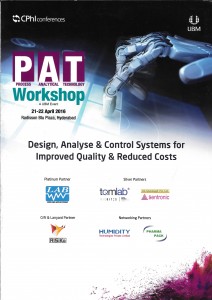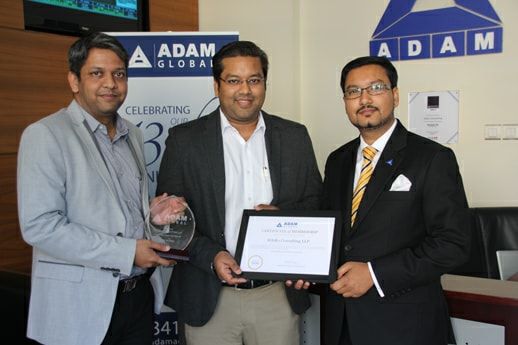Your business is probably your biggest asset and hence it’s important to understand an estimate of its value. However, the biggest problem is that company valuation is a very complex and involves several different factors. Business Valuation is a combination of science and expertise.
“Quote too low a figure, and you will undersell your company; aim too high, and you will never sell.”
For one thing, there is no one way to establish what a business is worth. That’s because business value means different things to different people. To the owner, the process of valuation is personal and emotional, and they many times have an unrealistic idea of how much their company is worth. To the buyer, the valuation process is far more objective. Both will look at “fair value” differently. Finding balance can prove to be extremely difficult.
A business valuation takes strategic and in-depth analysis to determine an accurate estimation of a company’s worth. There are numerous factors included in the process of establishing a selling price. It takes more than just a range of numbers to value a company.
Valuing a business on periodic intervals is a good practice, even if you are not planning to sell. Valuation helps you understand your business weaknesses and strengths and continue to improve its real or perceived value. It also helps to motivate the management team, if the team is compensated based on increase in business value. Regular valuation is a good discipline and can help you take the necessary steps and make the necessary adjustments to generate the maximum value in an eventual sale.
There are different ways one can estimate the value of any business. Each method is based on different financial information and presumptions, which might result in a different value.
Whichever method is used to value the company, one should always prepare a statement of income and profit/loss since most buyers request this document to estimate the cost of goods sold and operating expenses.The three most common methods used for Business Valuation are explained below:
DISCOUNTED CASH FLOW APPROACH (SUB-SET OF INCOME BASED APPROACH)
From the buyer’s perspective, this is the most accurate way to value a company because it forces the business owner to give more attention to details like trends in sales and profits and the capitalized value of the company. This method of valuation reflects the amount of money the investor estimates to come into the business in the next few years.
The Discounted Cash Flow method is a subset of the income-based approach, and is often used in M&A transactions. This method, which is based on estimating the current value of future cash flow, is appropriate for businesses which have forecasted steady cash flow over several years.
Discounted Cash Flow method determines the business value by considering these inputs:
- A stream of expected economic benefits, such as the net cash flows.
- A discount rate which establishes the required rate of return on investment.
- An expected gain from the disposition of the business at the conclusion of the ownership period, or the long-term (terminal) value.
There are three critical questions one needs to answer to capitalize future earning:
- Value: How much is the business worth today, based on what it will earn in the future?
- The Rate of Return: What is the investor’s expected rate of return?
- Equity Share: How much equity will the investor get for their investment?
Pros:
- Theoretically the most sound method if one is very confident in the projections and assumptions, because DCF values the individual cash streams (the actual source of the company’s value) directly.
- DCF method is not heavily influenced by temporary market conditions or non-economic factors.
Cons:
- Valuation obtained is very sensitive to modelling assumptions—particularly growth rate, profit margin, and discount rate assumptions—and thus, different DCF analyses can lead to wildly different valuations.
- DCF requires the forecasting of future performance, which is very subjective, and most of the value of the company is usually derived from the “terminal value,” which is the set of cash flows that occurs after the detailed projection period (and is therefore usually projected in a very simple way).
This approach is best suited for solid cash-generating businesses (i.e. businesses that are not asset intensive)
ASSET-BASED APPROACH
An asset-based approach is a type of business valuation that focuses on a company’s net asset value (NAV), or the fair-market value of its total assets minus its total liabilities, to determine what it would cost to recreate the business.
The real value of assets in an asset-based approach for valuing a business may be much greater than simply adding up the recorded assets. But, depending on the nature of the business, the asset-based approach may result in a lower valuation, as it may not adequately take into consideration the intangible, going concern value of the business.
Adjusted Net Asset Method
The asset-based approach is best used when a business is nonoperating or has been generating losses, and the company’s focus is holding investments or real estate. The adjusted net asset method is commonly used for estimating the value of the business. The difference between the fair market value of the company’s total assets and the fair market value of its total liabilities determines the fair market value of the business.
Asset-based business valuations can be done on a going concern or on a liquidation basis.
- A going concern asset-based approach lists the business’s net balance sheet value of its assets and subtracts the value of its liabilities.
- A liquidation asset-based approach determines the net cash that would be received if all assets were sold and liabilities paid off.
Using the asset-based approach to value a sole proprietorship is more difficult. In a corporation, all assets are owned by the company and would normally be included in a sale of the business. Assets in a sole proprietorship exist in the name of the owner and separating assets from business and personal use can be difficult.
This approach is typically used where a business is not a going concern, or where a business is a going concern, but its value is tied directly to the liquidation value of its underlying tangible assets and investments.
MARKET COMPARABLE APPROACH
Market value approaches to business valuation attempt to establish the value of your business by comparing your business to similar businesses that have recently sold. The market comparable approach values your business using the average of similarly situated businesses in the same or similar industries. The market approach offers the view of business market value that is both easy to grasp and straightforward to apply. The idea is to compare your business to similar businesses that have sold.
A market approach is a method of determining the appraisal value of an asset based on the selling price of similar items. Additionally, the market approach can be used to determine the value of a business ownership interest, security, or intangible asset.
There are two approached to market comparable method that are primarily used when valuing a business, the Guideline Transaction Method, and the Guideline Public Company Method. These methods are used to value a company based on the pricing multiples observed for similar companies that were sold or are publicly-traded.
Market multiples are revenue, EBITDA, EBIT, net profit multiple, the price-earnings ratio (PER or P/E ratio) or the Market-to-book ratio, where the multiples are always a multiple of the listed figures. With unlisted companies a comparison is made with prices paid on the stock market, however, proven to be relatively difficult.
Limitation of Market Comparable Approach
- Market data may not be available or only be available for a limited number of goods and services and may not reflect the correct value.
- The true economic value of goods or services may not be fully reflected in market transactions, due to market imperfections (organised/ unorganised) and/or policy failures.
- Seasonal variations and other effects on price must be considered.
- The market price method does not deduct the market value of other resources used to bring products to market, and thus may overstate benefits.
Pros:
- Market efficiency ensures that trading values for comparable companies serve as a reasonably good indicator of value for the company being evaluated, if the comparable are chosen wisely. These comparable should reflect industry trends, business risk, market growth, etc.
- Values obtained tend to be most reliable as an indicator of value of the company whenever a non-controlling (minority) investment scenario is being considered.
Cons:
- No two companies are perfectly alike, and as such, their valuations generally should not be identical either. Thus, comparable valuation ratios are often an inexact match. Also, for some companies, finding a decent sample of comparables (or any at all!) can be very challenging. Thus, in Comparable Companies analysis are always running the risk of “comparing apples to oranges,” never being able to find a true comparable, or simply having an insufficient set of comparable valuations from which to draw.
- Illiquid comparable stocks that are thinly traded or have a relatively small percentage of floated stock might have a price that does not reflect the fundamental value of that company.
 Online Enquiry
Online Enquiry
 Useful Links
Useful Links










